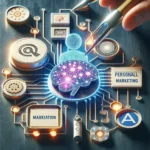Introduction
The Internet of Things (IoT) is reshaping various industries, and facility management is no exception. With the integration of smart technologies, IoT is facilitating more efficient operations, enhanced decision-making, and significant cost savings. This article will explore the transformative impact of IoT in facility management.
What is IoT in Facility Management?
IoT refers to a network of interconnected devices that collect and exchange data via the internet. In the context of facility management, it involves the use of sensors, smart devices, and software platforms that increase operational efficiency.
Benefits of IoT in Facility Management
- Real-Time Monitoring: IoT devices enable facility managers to monitor systems like HVAC, lighting, and security in real-time. This immediate access to data allows for timely interventions and maintenance.
- Predictive Maintenance: Utilizing IoT data analytics helps in predicting when equipment requires maintenance. This proactive approach reduces downtime and extends the lifespan of assets.
- Energy Efficiency: Smart sensors can track energy consumption and provide insights on optimizing energy usage, leading to significant reductions in utility bills.
- Enhanced Security: IoT devices such as smart cameras and access control systems improve facility security by offering real-time surveillance and alerts.
- Improved Space Utilization: With the use of sensors to track space usage, facility managers can better allocate resources and workspaces.
Key IoT Technologies in Facility Management
1. Smart Sensors
Smart sensors capture data on various factors, including temperature, humidity, and occupancy. This data is vital for optimizing the comfort and safety of occupants.
2. Building Management Systems (BMS)
A BMS integrates various facility systems under one control platform, allowing facility managers to monitor and control HVAC, lighting, energy usage, and security from a central location.
3. Asset Tracking
IoT-based asset tracking helps in monitoring the condition and location of assets in real-time, ensuring that resources are effectively utilized and managed.
Challenges and Considerations
While IoT presents numerous advantages, there are challenges that facilities must address:
- Data Security: The increase in connected devices raises concerns about data breaches and cybersecurity risks.
- Integration Issues: Existing technologies may need upgrades to integrate with IoT systems, which can be costly.
- Training and Adoption: Staff must be trained to effectively use and implement IoT technologies.
Conclusion
The integration of IoT into facility management is not just a trend but a necessity for modern organizations striving for efficiency and agility. By leveraging smart technologies, facility managers can enhance operational effectiveness, reduce costs, and create a safer environment for building occupants.


